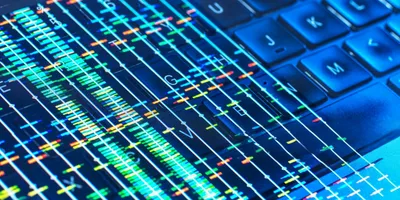A team of University of Melbourne researchers from the Caruso Nanoengineering Group has created an innovative drug delivery system with outstanding potential to improve drug development.
The team has pioneered a drug delivery system that is a coordination network composed of only metal ions and biomolecules, known as metal-biomolecule network (MBN). This system eliminates the need for complicated drug 'carriers', making it potentially more useful in a range of applications.
The research has been published in Science Advances and was led by Melbourne Laureate Professor and NHMRC Leadership Fellow Frank Caruso, from the Department of Chemical Engineering in the Faculty of Engineering and Information Technology, with Research Fellows Dr Wanjun Xu and Dr Zhixing Lin joint first authors.
The MBN nanoparticles are formed by combining non-toxic metal ions (such as those absorbed through diet, like calcium or iron) with phosphonate biomolecules (such as DNA, which is the building block of life). The MBN nanoparticles are chemically and metabolically stable and have antiviral, antibacterial, antifungal, anti-inflammatory and anti-cancer properties.
Dr Zhixing said one of the most significant benefits of the MBN system will be potentially increased success in drug development, because it uses materials highly compatible with the human body and avoids the use of potentially toxic drug carrier systems.
"We have created functional metal−organic networks that can easily assemble biomolecule drugs for biomedical applications such as anti-cancer or anti-viral therapies, gene delivery, immunotherapy, biosensing, bioimaging or drug delivery," Dr Zhixing said.
A large number of drug carriers have been developed by scientists around the world, but many of these fail due to toxicity from materials that evoke an immune response.
"At present, the challenges of drug development and approval mean that only about one out of 10,000 drug compounds, on average, reaches market approval, with many others failing due to safety issues. Any additional, non-functional components in carriers can potentially increase toxicity," Dr Wanjun said.
The team had to overcome the challenge that 'free' biomolecular cargoes often cannot reach their target cells to achieve the required biological function. Over the two-year project, they were able to minimise the use of extra, non-functional components and create a simpler material system with greater potential for success, without compromising performance.
There are various strategies to ensure the MBN nanoparticles activate at the required location. For instance, in an acidic cancer environment, such as in tumours associated with breast cancer, where the tumour microenvironment is typically more acidic than surrounding tissues, the engineered nanoparticles could disassemble.
Professor Caruso said the MBNs are 'tuneable', which means they can be customised for various biomedical applications, with size, cargo, potential targeting, as well as other properties that can be engineered by selecting different biomolecules, metal ions and assembly conditions. "It provides a modular approach to construct multifunctional nanoparticles with diverse compositions."
"Our system provides insights into fundamental assembly mechanisms and will allow us to create a library of bioactive nanoparticles for biomedicine, as well as environmental science, where biological barriers to delivery also exist," Professor Caruso said.
The next phase of the team's research will focus on gaining a deeper understanding of the MBN system and trialling it to formulate advanced materials aimed at treating diseases.
Lab Quality Management Certificate
The Lab Quality Management certificate is more than training—it’s a professional advantage.
Gain critical skills and IACET-approved CEUs that make a measurable difference.
-Note: This news release was originally published by the University of Melbourne. As it has been republished, it may deviate from our style guide.












